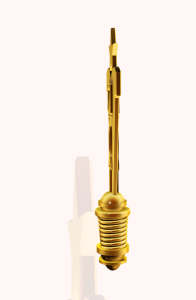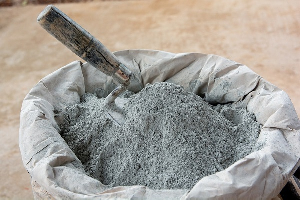A battle over cement pricing in Ghana reached a new stage this week when the Chamber of Cement Manufacturers (COCMAG) hit back at proposed government regulation. Frédéric Albrecht, the chair of the association, told a meeting that about 80% of local production costs linked to cement manufacture are related to the local currency exchange rate. So fixing the price would do little to address the main cause behind rises.
Albrecht was speaking at a stakeholders’ forum organised by the Ghana Chamber of Construction. The group was convened to discuss the government’s proposed Ghana Standards Authority (Pricing of Cement) Regulations 2024 that were formally presented in the country’s parliament in early July 2024.
The association argues that the cement sector has not been consulted properly over the proposal and that introducing it could have negative consequences for the construction sector as a whole. It says that imported clinker is subject to numerous taxes and that the average price of cement has actually lagged behind the rate of inflation.
The government is dealing with an economic crisis that forced it to default on its external debts in 2022 and ask the International Monetary Fund for support. This has led to depreciation of the local currency and high inflation.
Around the same time the authorities have also been attempting to regulate the cement sector more closely. In 2022 the Ghana Standards Authority (GSA) took action against a brand of cement, Empire Cement, that appeared to be on sale without any of the required permits.
Then in the autumn of 2023 the Ghana Revenue Authority (GRA) shut down Wan Heng Ghana’s grinding plant in Tema after the company failed to pay a major tax bill. Action by the GSA followed when it shut down three more plants in the Ashanti Region – Xin An Safe Cement Ghana, Kumasi Cement Ghana and Unicem Cement Ghana – for using inferior materials in cement production.
In April 2024 a nine-member committee was established to monitor and coordinate the local cement industry. Notably, cement producers have been required to register with the committee in order to secure a licence to manufacture cement.
Kobina Tahir Hammond, the Trade and Indus¬try Minister, then said in late June 2024 that the government wanted to intervene in cement pricing to protect consumers from what he described as the ‘haphazard’ increment in cement prices by manufacturers.
A legislative instrument doing just that was presented in parliament on 2 July 2024. Around the same time the GSA reportedly threatened to close down ‘several’ more cement plants for non-compliance.
The cement industry in Ghana is particularly vulnerable to currency exchange effects as it is dominated by grinding plants. One integrated cement plant, Savanna Diamond Cement, was launched in the north of the country in the mid 2010s.
However, this compares to 14 licensed grinding plants in the country reported in the local media. This includes units run by Ciments de l’Afrique (CIMAF), Dangote Cement, Diamond Cement (WACEM) and Heidelberg Materials subsidiary Ghacem and its CBI Ghana joint-venture amongst others.
This makes it one of the countries in Sub-Saharan Africa with the most grinding plants, along with places such as Mozambique and South Africa. When the Ministry of Trade and Industry started a consultation on regulating the cement sector in late 2023 it calculated that the country produced 7.2Mt of cement in 2021 and that the country had an overcapacity of 3.5Mt. This gives the country an estimated cement production capacity of just below 11Mt/yr.
Some sense of the growing costs that the cement sector in Ghana is facing can be seen in the Ghana Statistical Trade Report for 2023. Clinker was the country’s third biggest import by value at US$206m. It was only exceeded by diesel and other automotive oil products.
The Ghana Statistical Service reported that most of the country’s imported clinker in 2023 came from Egypt, South Africa and its neighbours in West Africa. Both Dangote Cement and Heidelberg Materials flagged up the country’s economy as being hyperinflationary in their respective annual reports for 2023.
Argument and counter-argument over cement pricing is prevalent around the world especially in Africa. Fellow West African country Nigeria, for example, has endured plenty of very public dialogue and debate about the price of cement.
In Ghana’s case it seems more likely than not that factors beyond the control of the local cement companies are driving the prices given the grinding-dominated nature of the sector with lots of different companies involved.
Negative currency effects and inflation look more likely to be driving cement prices than anything else, although one should always be wary of the potential for cartel-like behaviour by cement producers. The economic crisis in Ghana certainly fits the bill for the conventional introduction of price controls on selected commodities but getting the fine tuning right could be difficult in practice.
Fixed prices will reassure consumers in the short term provided supplies hold. Beyond this the actual causes of the high cement prices should emerge in time.
Click to view details



Business News of Friday, 19 July 2024
Source: globalcement.com

















